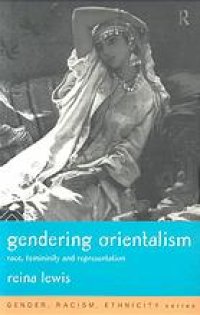"To what extent did white European women contribute to the imperial cultures of the second half of the nineteenth century?" "In contrast to most cultural histories of imperialism, which analyse Orientalist images of rather than by women, Gendering Orientalism focuses on how women themselves contributed. Drawing on the little-known work of Henriette Browne, other 'lost' women Orientalist artists and the literary works of George Eliot, the author challenges masculinist assumptions relating to the stability and homogeneity of the Orientalist gaze." "Gendering Orientalism argues that women did not have straight-forward access to an implicitly male position of Western superiority. Their relationship to the shifting terms of race, nation and gender produced positions from which women writers and artists could articulate alternative representations of racial difference. In order to draw out how the meanings attributed to their words and images, as well as to the writers and artists themselves, were specifically gendered, classed and racialized, the author examines women's visual and literary Orientalism through their contemporary reception in the press." "By revealing the extent of women's involvement in the popular field of visual Orientalism and highlighting the presence of Orientalist themes and structures in the work of Browne, Eliot and Charlotte Bronte, Gendering Orientalism argues for a more complex understanding of women's role in imperial culture and discourse. The book should appeal to all students and lecturers in cultural studies, literature, art history, women's studies and visual anthropology."--Jacket. Read more...
